Spain today remains one of the most strongly Catholic nations in Europe – but the supremacy of the Christian Church on the Iberian Peninsula only began in the late 15th century. For the entire Medieval era, Spain was a patchwork of Islamic and Christian states, whose relations were tumultuous – but nowhere near as nemesis-like as it might be easy to assume. Iberia was an outpost of a vast Islamic empire, known as the territory of Al-Andalus (from which we derive the modern name of Andalusia). The process of the ‘Reconquista’, the gradual expansion of the Christian Kingdoms in the North to encompass the whole peninsula, was nearly complete by the middle of the 13th century – but one state held out: the Emirate of Granada. Their Nasrid ruling dynasty thought of themselves as a cultured and wealthy bastion of Islamic society, amidst a sea of Christian barbarians. And the majestic architecture of the Alhambra in Granada itself remains a stunning testament to this legacy.
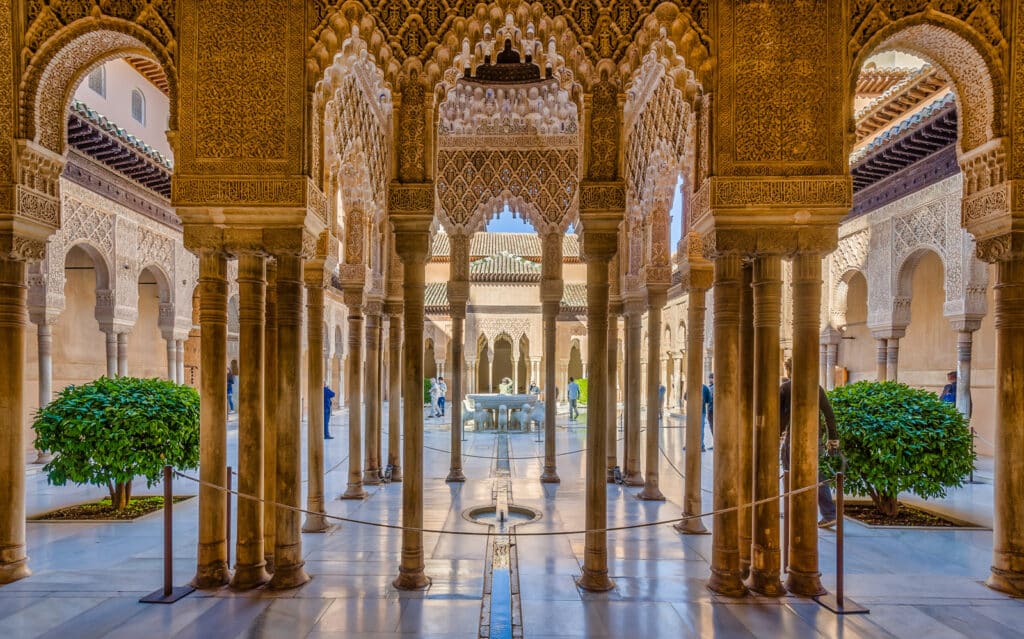
In examining the history of Nasrid Granada, we shall see how this Islamic state not only resisted Christianization, but flourished as a maritime trading power for more than two centuries. And far from being the implacable enemies of the Christian Kingdoms of Castile and Aragon, their position would have been impossible without a complex and nuanced series of diplomatic relations and cultural exchanges. But, ultimately, the Nasrids were to be the last Islamic kingdom in Europe.
The Reconquista
But how did modern Spain and Portugal come to be the home of Muslim kingdoms in the first place? Post-Roman Hispania was ruled over by the Visigoths, a Roman client people from Northern Europe who had settled in the region in the 5th century – but their rule never set down deep roots. By the 8th century, the Umayyad Caliphate had expanded a vast Islamic empire out from Arabia, encompassing the whole Middle East and North Africa. Eyeing the unstable Iberian peninsula, the Umayyads launched a conquering expedition across the Strait of Gibraltar in 711 CE. This large army collapsed Visigothic rule in Spain in several short years, incorporating the whole of the Peninsula to the Pyrenees into the Umayyad empire. In 750 CE, the Umayyads in Medina were overthrown by the Abbasid dynasty, leaving Al-Andalus as its own independent Emirate.
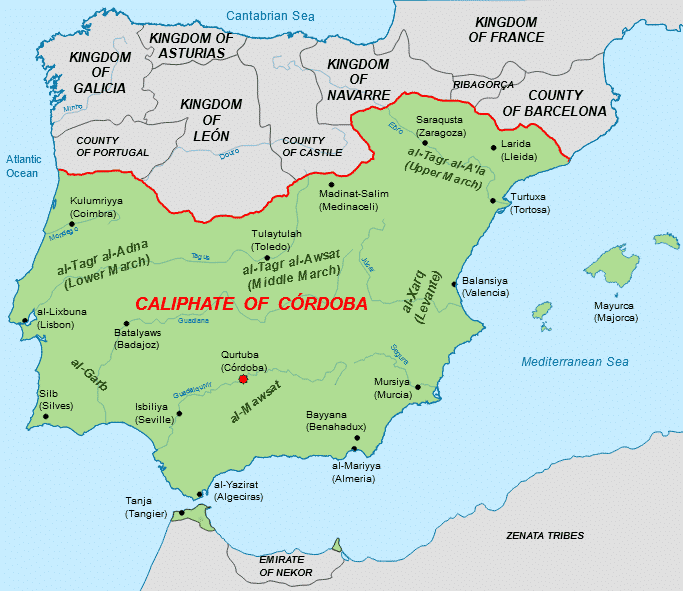
Gradually, the furthest flung corners of Iberia regained their independence, carving out small Christian kingdoms in Galicia and the Basque country, which had only been cursorily occupied by the Umayyad invasion. Though they spent as much time fighting against one another as they did against the Muslims to the South, they gradually began to extend their territories at the expense of Muslim governors of Al-Andalus – a process known as the ‘Reconquista’. Eventually, the thrones of Castile, Leon, Aragon and Navarre emerged as the four main kingdoms in the North. The Reconquista picked up pace from the middle of the 11th century during the Fitna (Civil War) of Al-Andalus, where the Emirate fragmented into warring taifa kingdoms, hamstringing whatever unity the Muslims could muster against the Christian expansionists.
We shouldn’t think of this process as one of implacable enmity between all Muslims and all Christians. Frequently, this drawn-out war was expressed much more locally, with Christians and Muslims on either side according to their direct political interests. For example, Charlemagne’s invasion of Eastern Spain in 778 CE was undertaken with the support of local pro-Abbasid governors, and his army which besieged Zaragosa was probably a mixed force of Franks, Iberian Christians and North African Muslims. Even the legendary Spanish national hero El Cid spent many years fighting as a mercenary knight in the service of several taifa emirates. This understanding of the fluid interests in the region has been lost over the intervening centuries of ‘culture war’, and without it, we can’t explain why the Nasrid Emirate of Granada lasted for so long.
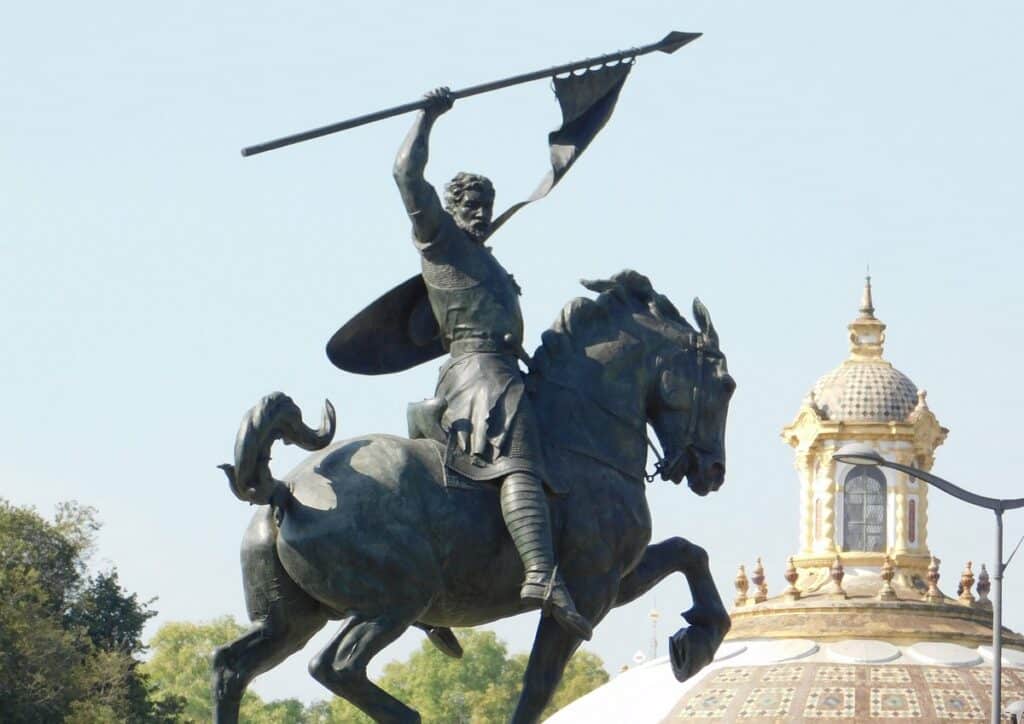
The Fall of Al-Andalus
By the beginning of the 13th century, Al-Adalus was fragmenting. Despite a resurgence under the Berber Almohad dynasty, they had been checked at the Battle of Navas de Tolosa in 1212 CE. This catastrophic defeat of Caliph Muhammad al-Nasir marked a watershed in the fall of Al-Andalus: on an extremely rare occasion, the squabbling Christian kingdoms had temporarily put aside their grievances and united to field a single coalition army. When Ferdinand III of Castile took the throne five years later, the route to conquering the whole of Al-Andalus for was open to him: the fortresses controlling the entrances to Andalusia were in his hands – but the Almohads would be a tough nut to crack. Where the Muslims were adept at exploiting Christian disunity, so he had to do the same.
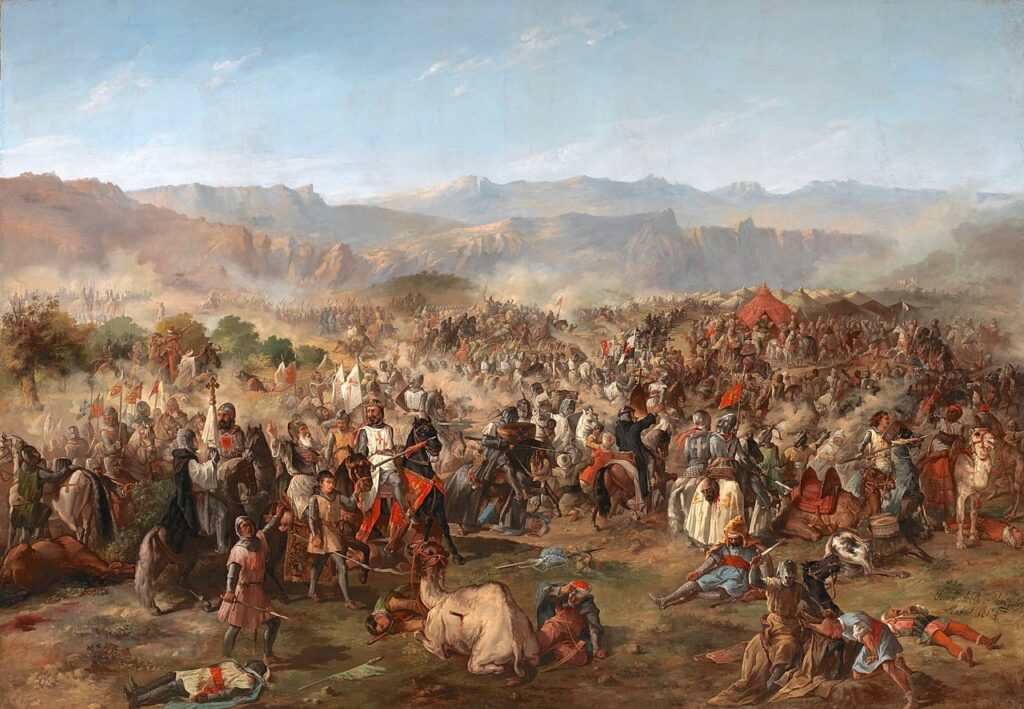
The opportunity came in 1228 CE. A succession crisis in Morocco caused the withdrawal of the main Almohad armies, leaving the defense of Iberia in the hands of a regional governors. The Christian armies quickly smashed the remaining garrisons, and in only two short decades, the Christian kingdoms expanded their territories by almost half again. In 1248, Ferdinand took the city of Seville, having taken dozens of critical towns along the way, including the historical capital of Al-Andalus itself, Cordoba. Only a rump state, protected by the hills of the Sierra Navada, remained in the hands of the once-great governors of Al-Andalus. (For a more detailed map of this collapse, see the Historical Atlas of the Mediterranean’s interactive map).
New Beginnings Amid the Chaos
Amid the chaotic collapse of Almohad Al-Andalus, a new force rose in the South: the Nasrid dynasty, who would go on to rule the last Islamic kingdom in Europe. Here, we shall chart its rise from obscurity in the hills of Andalusia.
Muhammad ibn Yusuf of the Banu Nasr clan was the leader the Andalusian town of Arjona, born at around the same time as Ferdinand III of Castile – but he quickly rose to prominence as a fierce border fighter against Ferdinand’s invasions of Andalusia. A breakaway taifa emir named Ibn Hud ruled the region where Muhammad ibn Yusuf lived, and the defeats suffered by Ibn Hud at the hands of the advancing Christians caused rebellions across the region – Muhammad ibn Yusuf rose up and led Arjona against the breakaway emir. After several years of conflict with Ibn Hud, Muhammad ibn Yusuf saw which way the wind was blowing and allied himself with Ferdinand III, aiding the Castilian King in taking the city of Córdoba. By cleverly walking the tightrope between former Almohad governors and the squabbling Christian kings, Muhammad ibn Yusuf subdued his former ruler Ibn Hud, and carved himself out a significant personal empire, rising to become the most important regional lord, under the nominal patronage of the Castilians. Ferdinand likely saw the ambitious Muhammad idn Yusuf as a useful means of outsourcing the conflict, weakening Muslim cohesion and providing cracks into which he could work his armies when the time came.
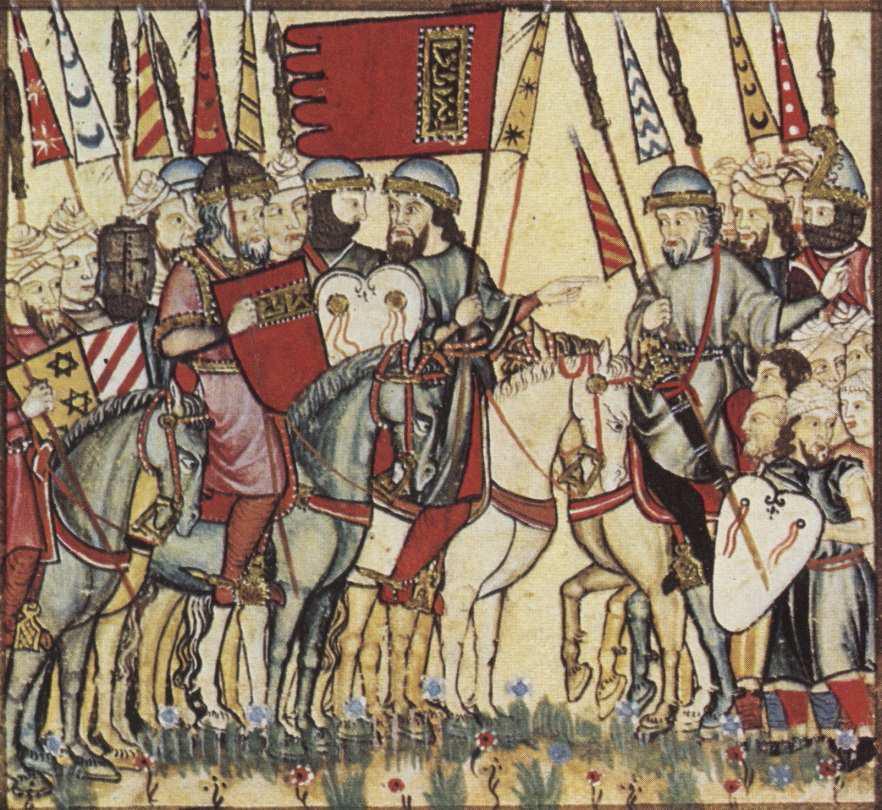
In 1238 CE, the civil authorities in the wealthy city of Granada invited the protection of Muhammad ibn Yusuf – and he entered the city in May of that year, wearing the simple clothes of a sufi mystic, according to tradition. He adopted the town as his capital, and declared himself Muhammad I, Sultan of Granada. One of his first acts was to survey a crumbling old fortress that had been built in the 9th century, called ‘al-Hamra’ (‘the red one’, after the red stone of the area). Muhammad I initiated plans to expand it into a glorious alcazar (fortified palace) with a network of fortifications and a palatial residence. Today, we know this as the Alhambra, and it would be the seat of Nasrid power for more than two-and-a-half centuries.
Sultan of the South
However, Sultan Muhammad I was not content to rule as a mere Castilian vassal. Until this point, is it clear that he had been operating with the material support of the Castilian monarchy, but now, having secured himself as a wealthy and powerful ruler with a rich and defensible territory, he could bite the hand that had fed him. Seizing upon the evictions of Muslims from Castile’s newly conquered territories, Muhammad I sought to push back, taking back some of the towns recently annexed by Castile. In response, Ferdinand III sent a punitive expedition to take Muhammad I’s hometown of Arjona and to besiege his city of Jaén. Unable to relieve the city, Muhammad I was forced to make peace. The exact nature of this peace is portrayed very differently in Christian and Muslim sources. Islamic annals record this as an agreement between equals, whilst the Christian histories describe this as the imposition of vassalage upon Muhammad I. What is certain is that Muhammad I agreed to give ‘aid and counsel’ to Ferdinand and his heirs, and to pay an annual tribute of 150,000 gold maravedies (later increasing to an eye-watering 250,000 maravedies). To give some context, this became the single most important source of income for the Castilian crown – it was a truly vast sum. That Muhammad I was able to accept this burden demonstrated not only the wealth but also the confidence of the Nasrids.
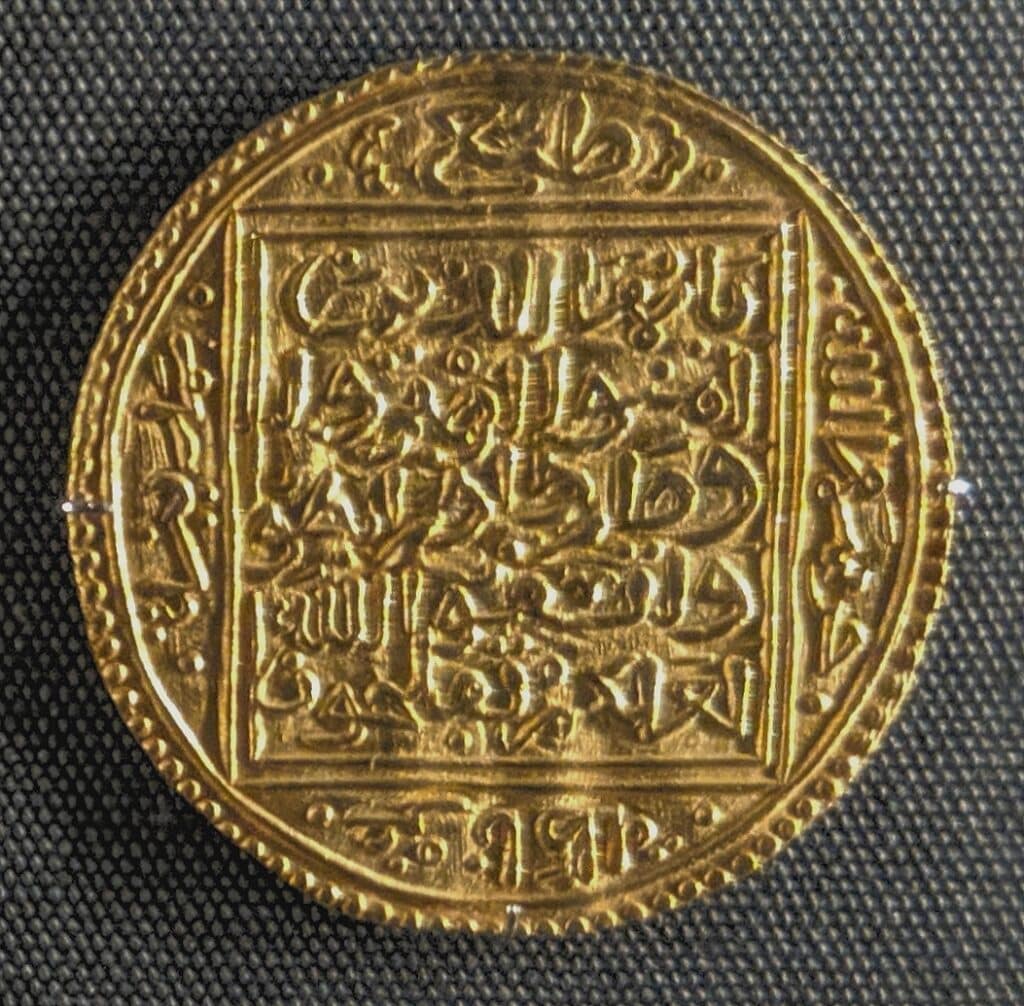
Over the formative decades of Nasrid Granada as the Sultan consolidated the Emirate, Muhammad I was a constant feature at the Castilian court, making regular courtly visits and providing military support to the Castilians against other Muslim states. But at the same time, Muhammad I was more than willing to play both ‘sides’ to advance is own interests, allying himself with the Hafsid Sultans of Tunis in North Africa to put pressure on the Castilians when they encroached upon his territory. This position, at the interface between the Muslim world and the Christian West, shows us the principle dynamic of Nasrid rule – one which was navigated with, frankly, almost uniformly staggering adroitness by the twenty-four Sultans of Granada.
Nasrid Granada
Far from becoming an isolated backwater, Nasrid Granada flourished. The lands of Andalusia were already wealthy and densely populated in the 13th century. They consisted of a flat plain between the Mediterranean coast and the Sierra Nevada in the north and east of the territory, which provided an excellent defensive line of mountainous redoubts against further encroachment. The west of Granadan emirate was less easily defended, and so was steadily eroded by the Castilians in their tempestuous frenemyship with the Nasrids – but broadly, the territory of the Emirate was exceptionally well-defended throughout its existence.
Nasrid society flourished in its two centuries. Looking South and East towards the Marinids in Morocco and the Abbasids in Baghdad, Nasrid Granada became an almost unrivalled European center for arts, culture and science. The incredible architecture of the Alhambra, raised to its highest glory under the late 14th-century Sultans, is clearly the peak of the Moorish tradition: its honeycomb-like muqarnas and calligraphic arabesques are some of the most spectacular examples of Medieval Islamic art anywhere in the world. As the last Islamic kingdom on the continent, Nasrid Granada became a haven for Muslims fleeing growing Christian persecution, and so saw an exceptional concentration of scientific and philosophical inquiry. Granada’s position at the confluence of East and West catalyzed this process, which fused Western European Medieval alchemy with the Islamic traditions that they had developed from the Greeks.
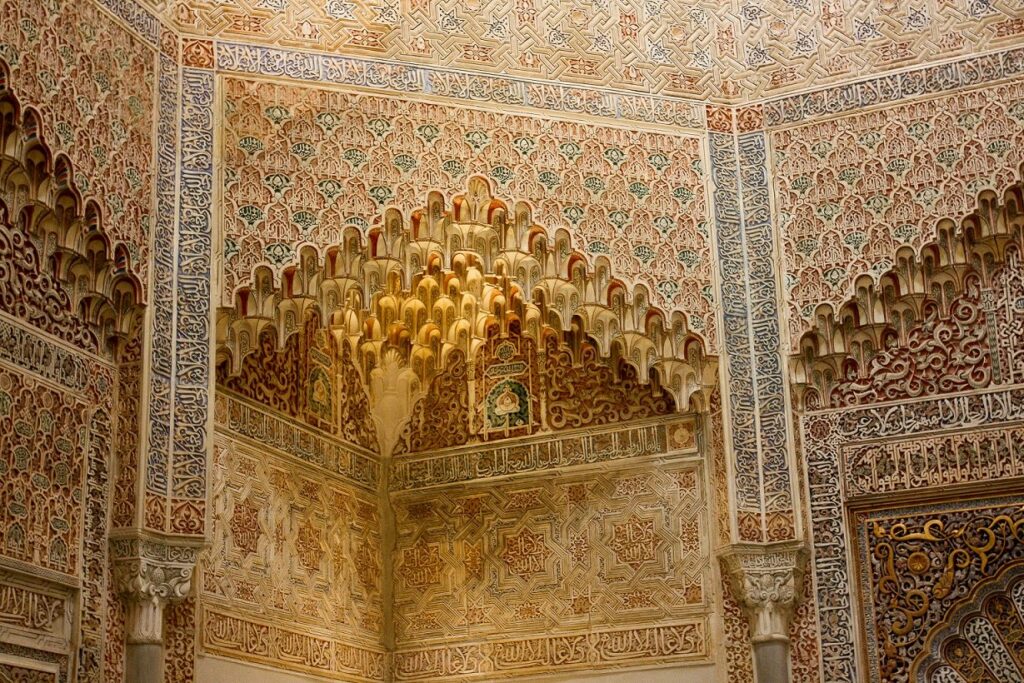
A Sevillan carpenter named Muhammad ibn al-Hajj built a simple hourly clock using water-powered wooden clockwork, possibly the first outside of China. Writer Ibn al-Baytar produced a foundational work of botany, systematizing and alphabetizing the works of dozens of other authors to produce a compendium of over 3,000 Iberian plants and their pharmacological uses. Innovations and improvements in mathematics, astronomy and medicine also abounded: astrolabes and sundials, algebra and indeterminate equations, human anatomy and horse-rearing and many other topics were advanced in Nasrid Granada. This flourishing intellectual society was fed by a vibrant maritime trade in the Mediterranean, and the Nasrids were constantly seeking to exploit diplomatic openings to control the sea routes.
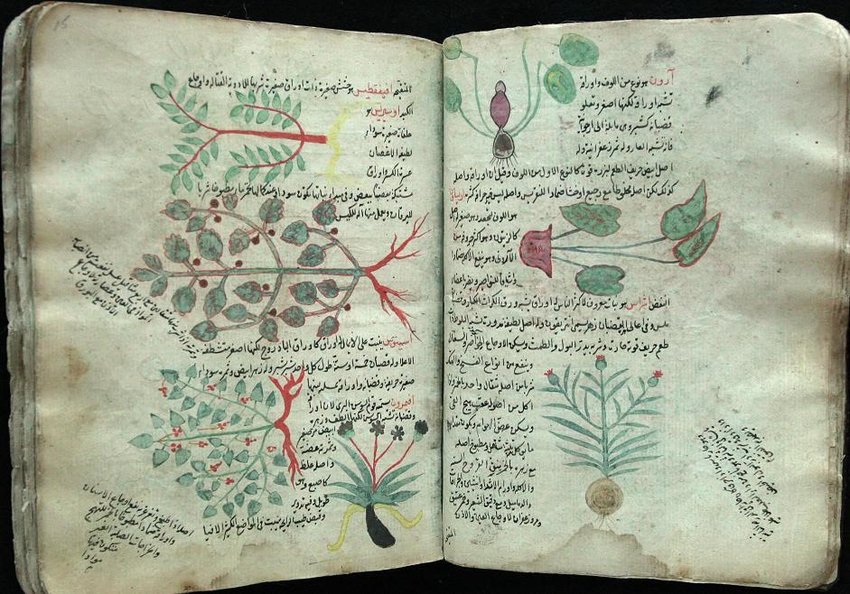
The Last Islamic Kingdom
Thus, in the 15th century, Nasrid Granada seemed to be a flourishing, wealthy society that had no indication that it would cease to exist within a few short decades. But its existence was always precarious: perched between East and West, its greatest source of vitality and diversity was also a razor blade. The union of the thrones of Castile and Aragon under the Catholic Monarchs Isabella and Ferdinand in the late 15th century presented the Emirate with a final unified threat: one which was extremist, intolerant of diversity, and hungry for new lands, both in Europe and in the New World. The Nasrids were to crumble under the combined weight of Spanish Christendom – and they would forever be the last Islamic kingdom in Europe.

 Historical Swords
Historical Swords Norse & Viking Swords
Norse & Viking Swords Templar Swords
Templar Swords Claymore Swords
Claymore Swords Fantasy Swords
Fantasy Swords Chainmail
Chainmail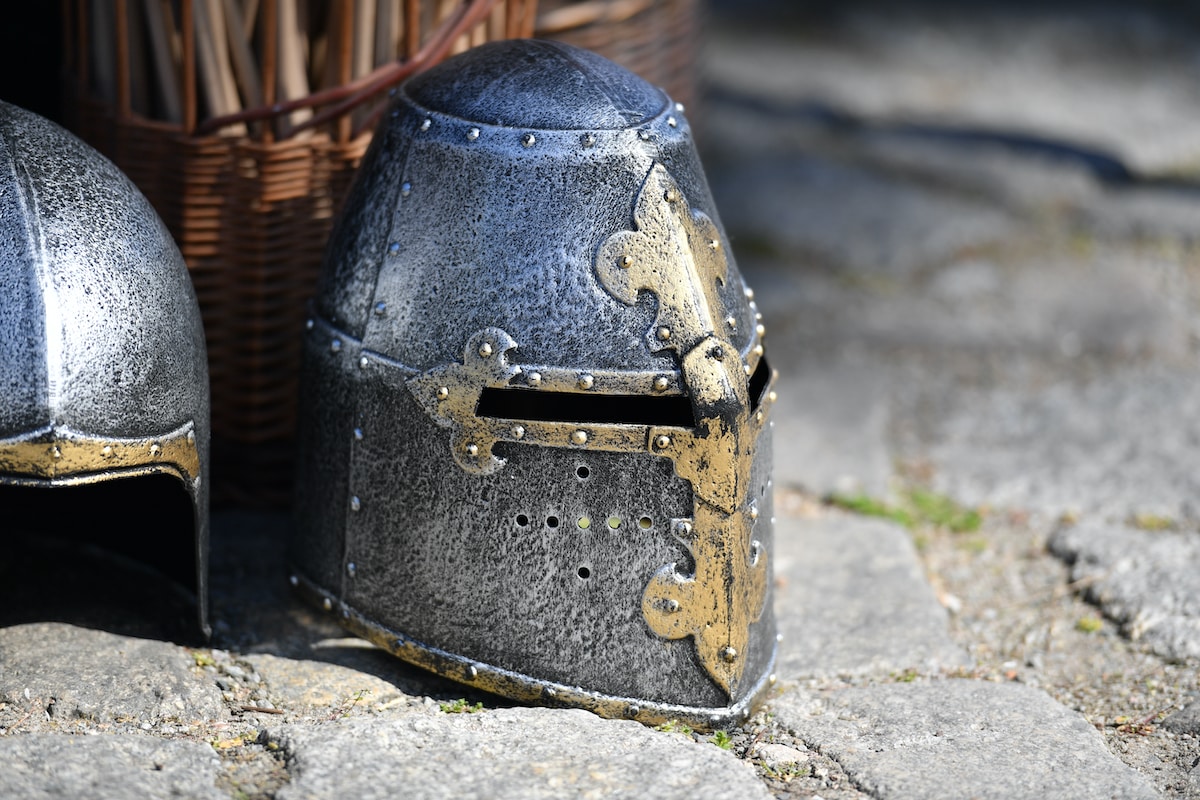 Helmets
Helmets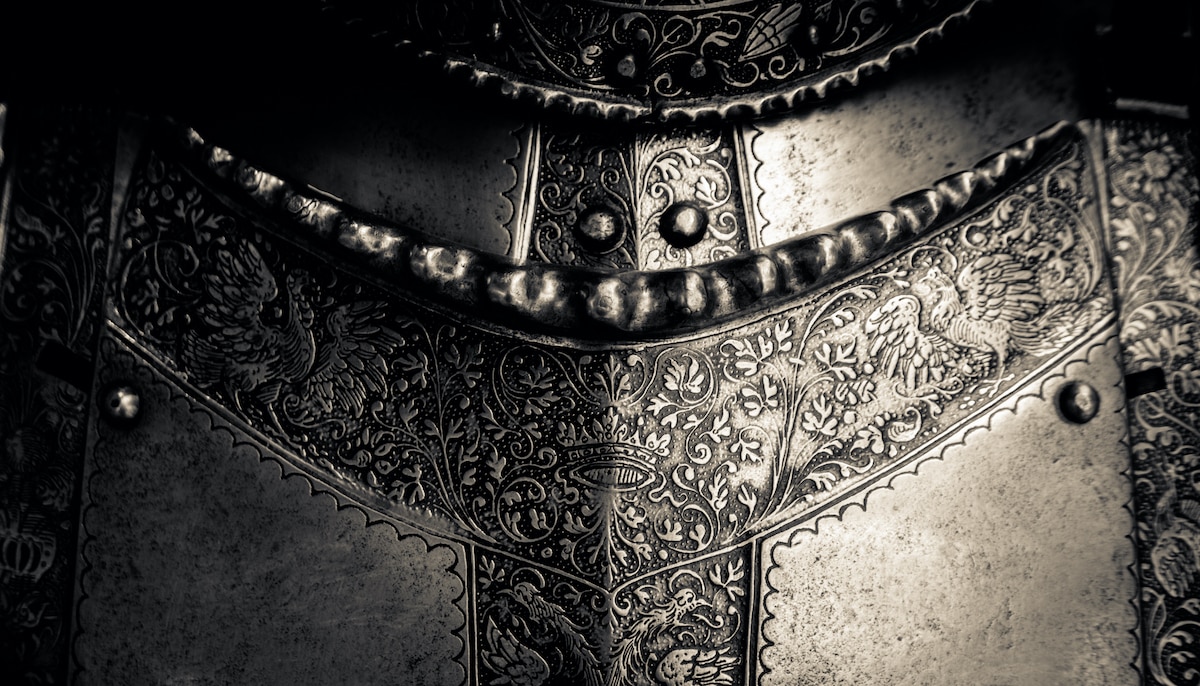 Torso Armor
Torso Armor Bracers and Arm Protection
Bracers and Arm Protection Gauntlets
Gauntlets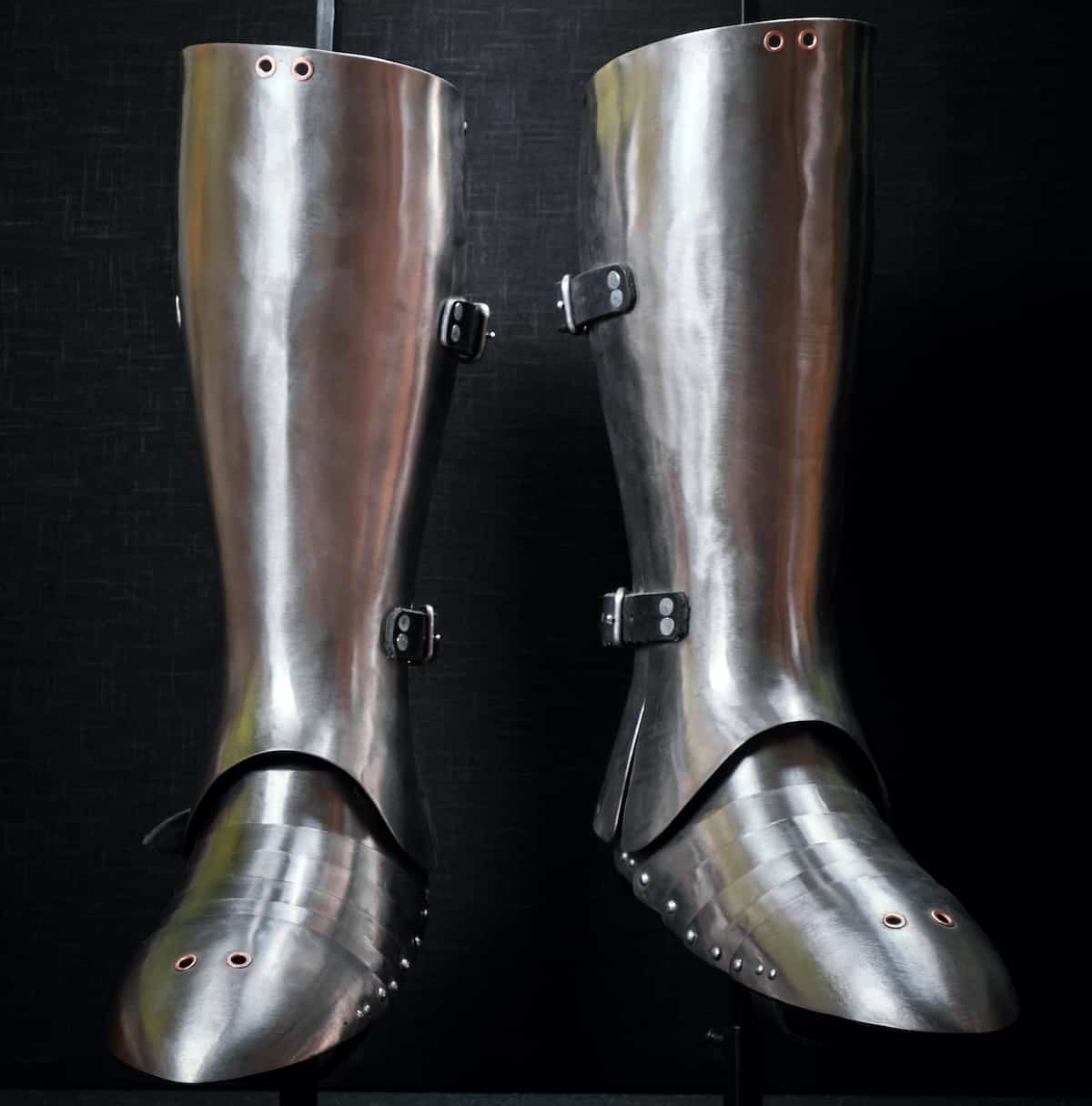 Leg Armor
Leg Armor Cloaks
Cloaks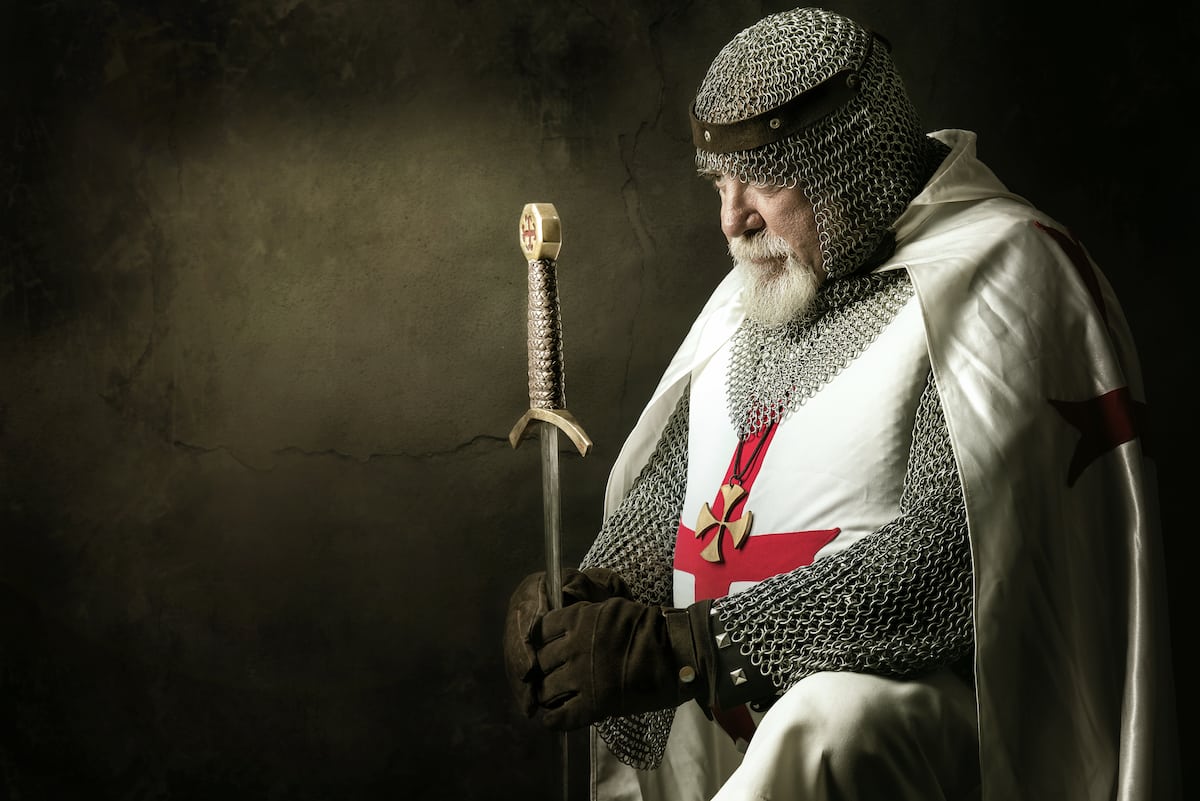 Tabards
Tabards Shirts
Shirts Tunics
Tunics Dresses
Dresses Pants
Pants Gloves
Gloves Belts
Belts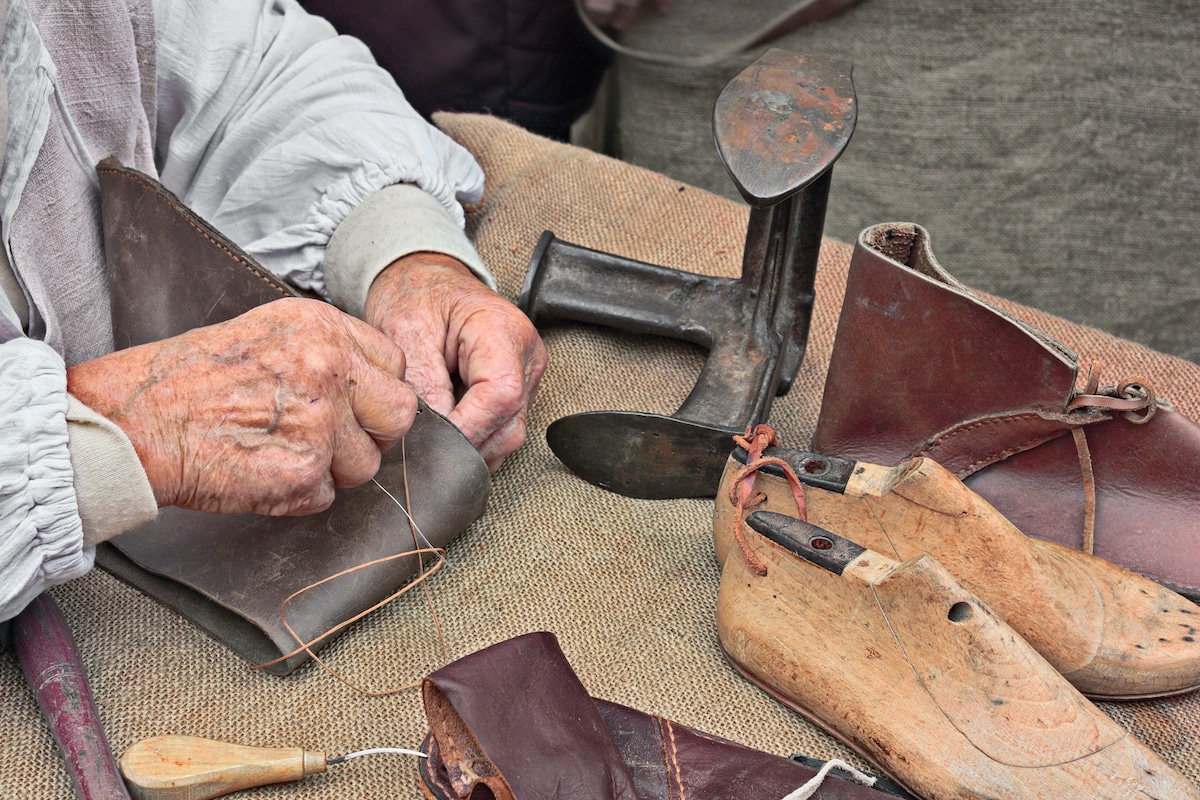 Shoes
Shoes Rings
Rings Necklaces & Pendants
Necklaces & Pendants Bracelets
Bracelets


